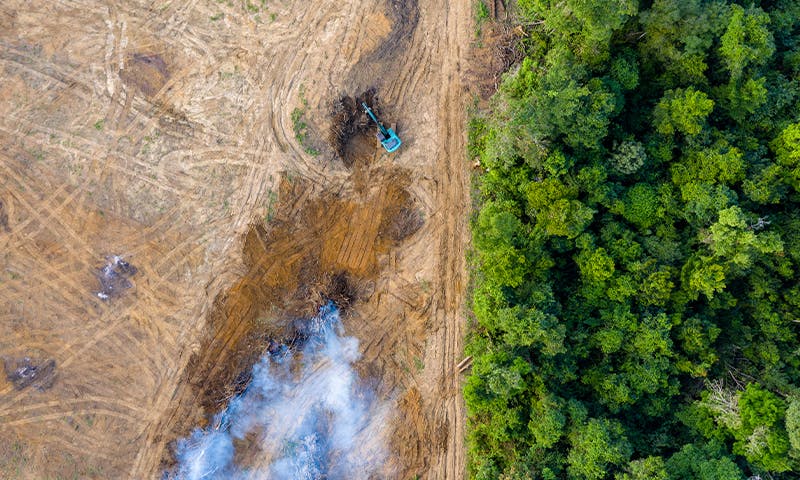TThe Amazon, the largest rainforest on our planet, is still losing millions of acres every year due to mining, farming, ranching, and modern settlements. As the forest disappears, it also loses its ability to act as a huge carbon sink, which can help protect us from rapid climate change. Additionally, the ancient forestry practices of indigenous people, which helped the trees thrive for centuries and supported human settlement, could be lost in the process.
In a 2023 paper published in Science, researchers discuss the dilemma of this situation. Despite appearing as untouched, wild nature, the Amazon forest, mostly in Brazil, has actually been shaped over centuries by Indigenous peoples. They introduced agriculture, including the husbandry of animals like llamas, alpacas, and guinea pigs, and the cultivation of plants like Brazil nut, cupuassu, guarana, pineapple, and peach palm. Many ancient societies, predating Columbus's arrival, likely relied heavily on innovative forestry management techniques such as earthworks – ancient structures like rings, ditches, ponds, wells, and geoglyphs made by moving and stacking soil, created by societies living in the region as far back as 500 A.D. The authors suggest that many of these structures have not been discovered yet.
“Ironically, modern deforestation is erasing the very evidence of pre-Columbian land-use strategies that were able to transform the landscape without causing widespread deforestation,” the researchers state. Modern mining, farming, ranching, and settlements threaten not only the trees, but also the infrastructure left behind by these ancient cultures.
The lead author of the paper, Vinicius Peripato, who is a geographer at Brazil’s National Institute of Space Research, and his colleagues used a remote-sensing technique called LIDAR to show that there are between 10,000 and 24,000 earthworks hidden in the ground of the Amazon forest. Most of these earthworks are located in unprotected regions of the Amazon that are at high risk of deforestation, known as the “Arc of Deforestation.”
Amazonia was home to societies that managed to use the forest without destroying it.
A consistent group of 53 domesticated tree species, identified in the LIDAR data, were linked to these developments, indicating active forestry practices among these societies, according to the researchers. They suggest that the earthworks helped the communities sustainably manage the forest, and could provide insight into how to better manage today's forests. Recording the evidence of earthworks could also help establish the rights of existing indigenous communities to the land, the authors state, thereby supporting the communities’ efforts to manage the land sustainably.
“Amazonia was home to dense and complex societies that managed to use the forest without destroying it,” Peripato says. “They altered the geography and biodiversity of the Amazon to sustain their lives.” He and his colleagues argue that we should protect the Amazonian forests not only for their ecological and environmental value – 10% of known global species live there – but also for their biocultural value, which can teach modern society how to sustainably manage its natural resources.
The building of ancient settlements in pre-Columbian times, some in Venezuela and other places, indicates advanced societies with extensive knowledge of constructing connected roads and pathways, fortified villages, large enclosures likely for social, ceremonial, or defensive purposes, geometric geoglyphs similar to the Nazca lines, plazas, and ceremonial stone structures like Stonehenge. They also understood river behavior, soil improvement, and the ecology of animals and plants, according to Peripato. They carefully controlled their natural resources, considering the variety, availability, and distribution of different plant species.
They constructed earthworks in dry, hot forest areas more susceptible to fires. The dry land was easier to manipulate for building and farming. They introduced fruit trees like cacao for food gathering and managed rubber plantations for latex, a milky fluid found in many plants, which they used to create waterproof containers, shoes, and rubber balls for ritual games. Learning from how these people managed the forest, along with ongoing scientific research on its ability to absorb carbon, “could lead to immeasurable developments,” according to Peripato. It might even help save it from disaster.
Lead image: Richard Whitcombe / Shutterstock



